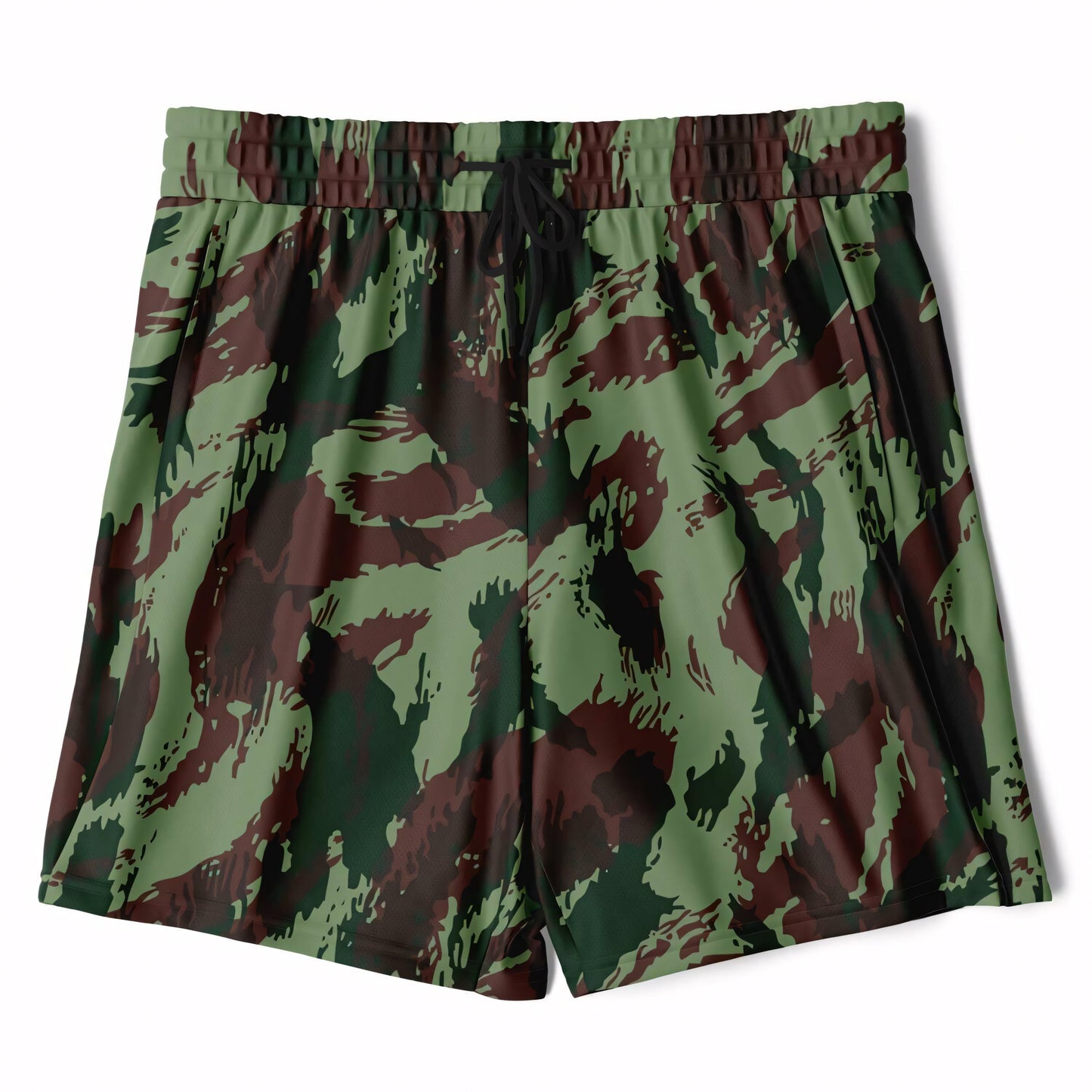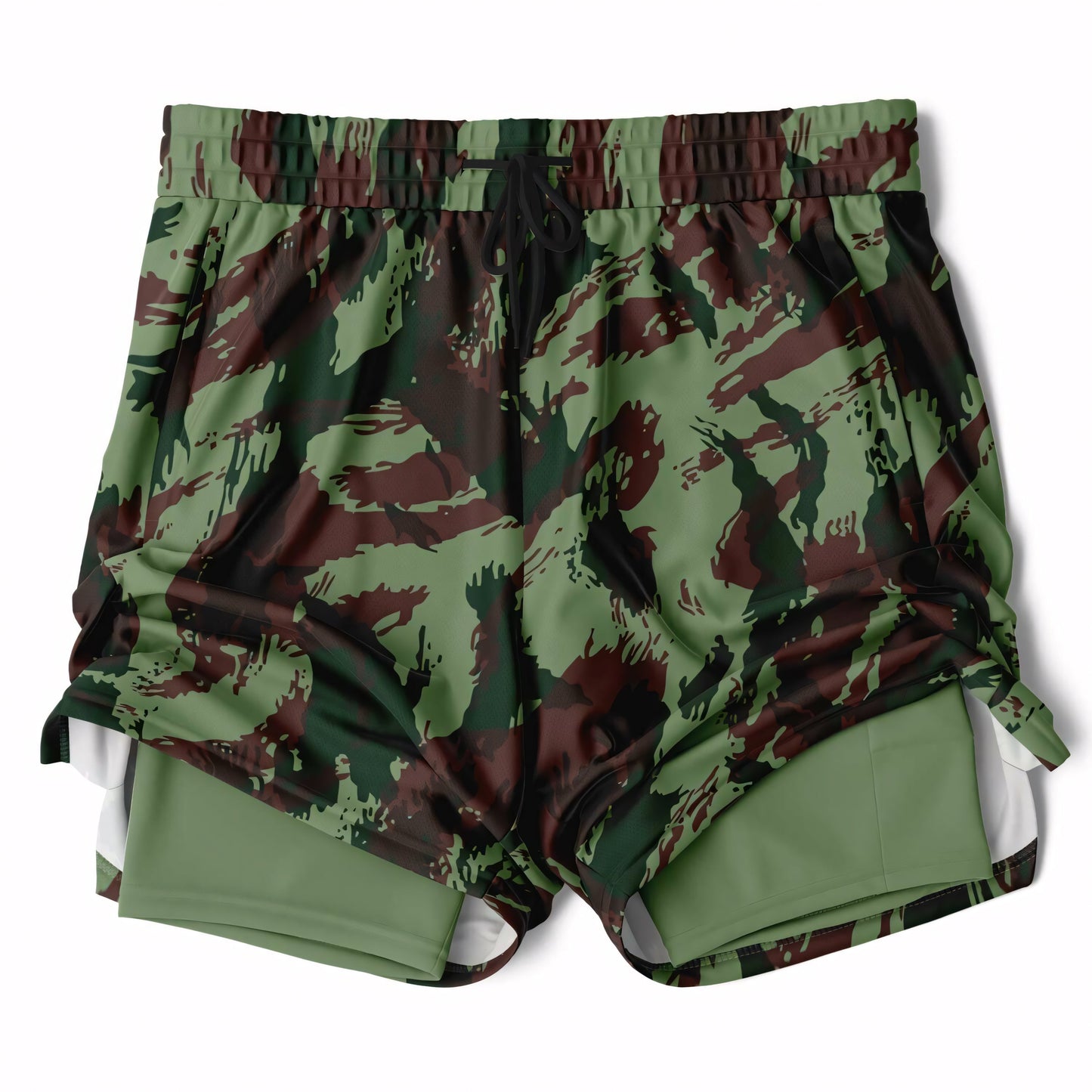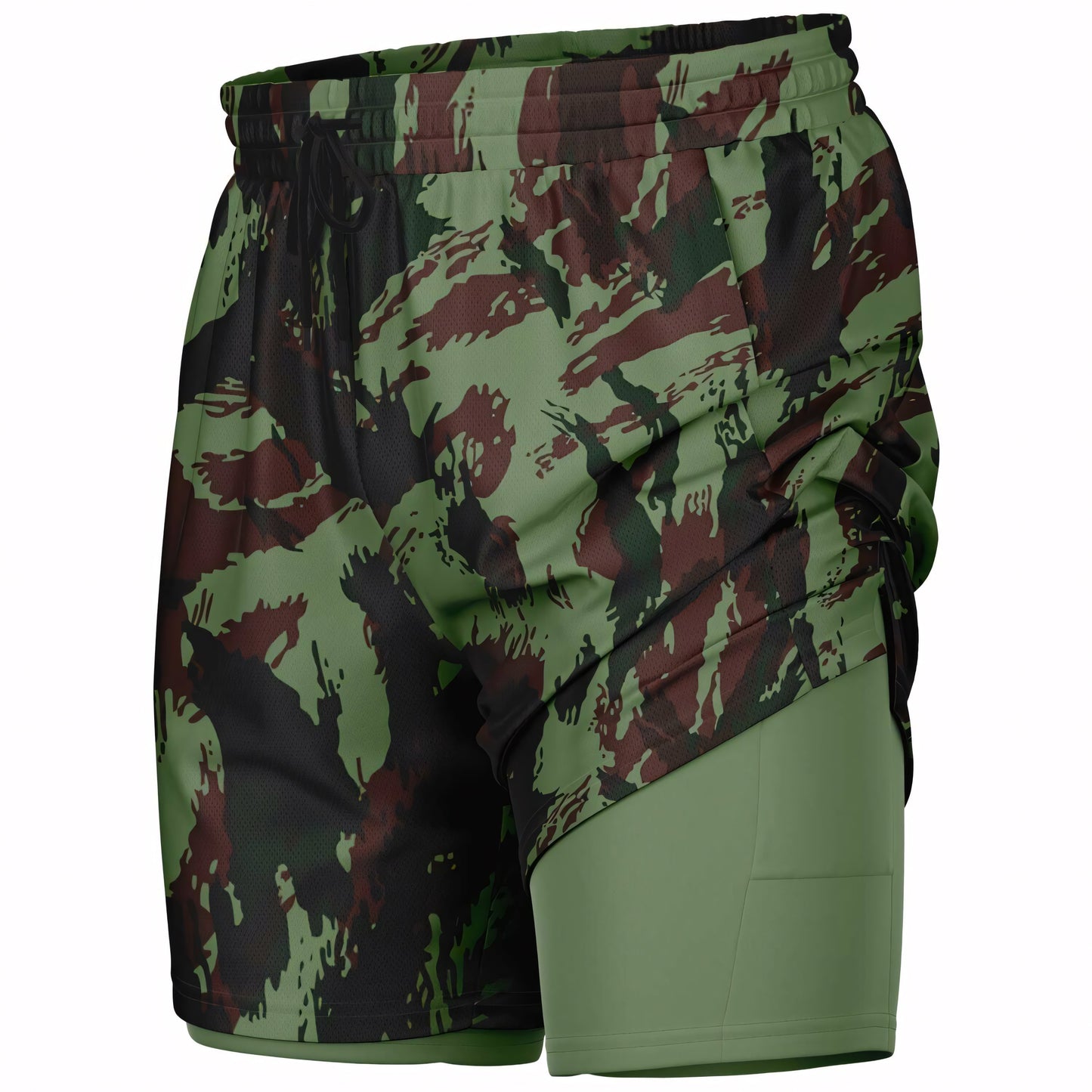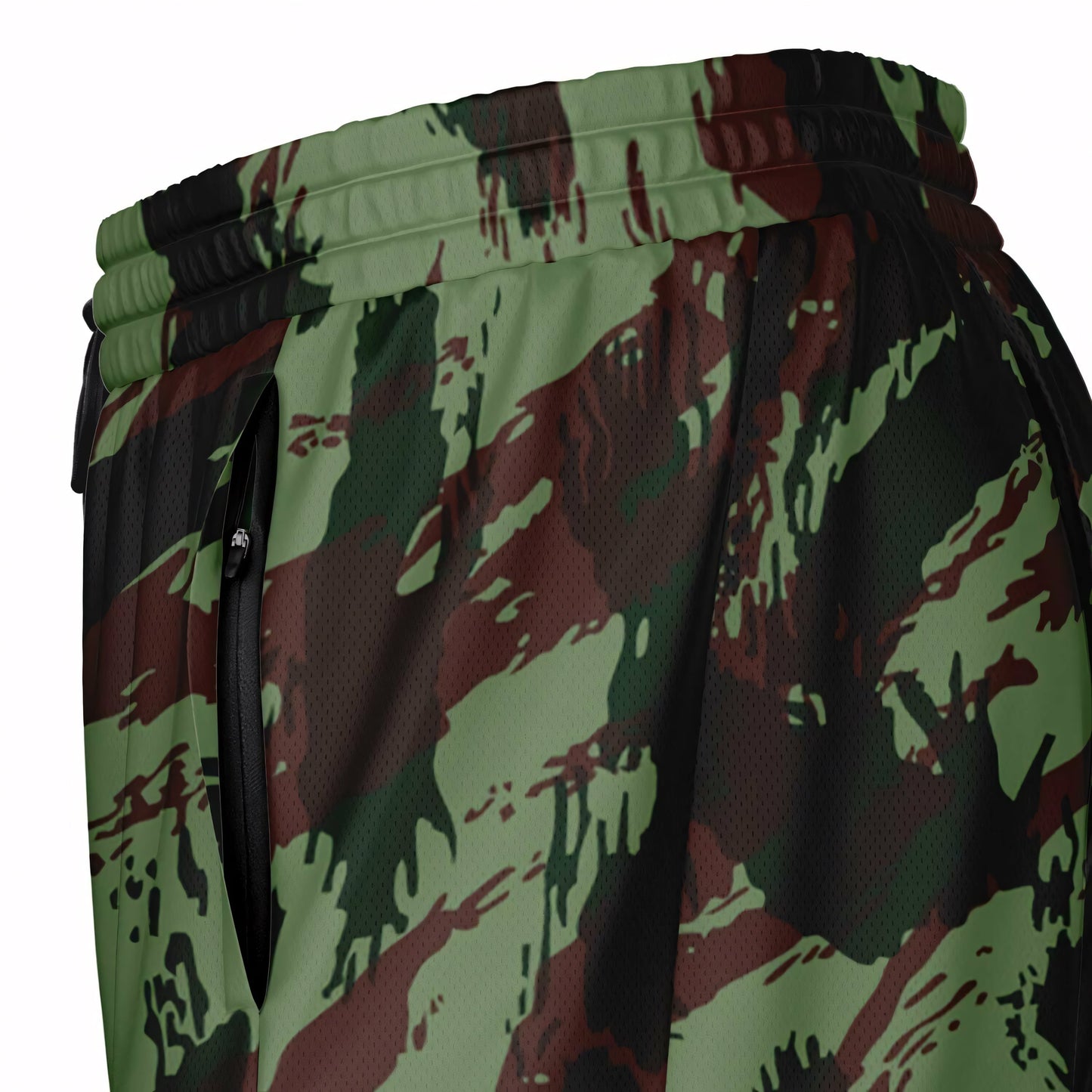









Camouflage Information:
The Portuguese Lizard Camouflage (M1964 or m64) was developed in the 1960s for Portugal’s decolonization wars, particularly in Angola, Mozambique, and Guinea-Bissau. Designed for superior concealment in dense jungle and savanna environments, it features vertical dark green and brown stripes on a light green background, optimizing its effectiveness in wooded and tropical terrains. Inspired by the French TAP47 and TAP56 Lizard camouflages, the Portuguese variant was adapted to suit the combat needs of elite units such as paratroopers, commandos, and special forces.
Unlike its French predecessor, which had a more horizontal orientation, the vertical alignment of the Portuguese Lizard pattern was intended to reduce visibility when soldiers were moving upright through jungle foliage. The pattern continues to be used today by the Portuguese Marines (Fuzileiros) and remains one of the longest-serving camouflage designs in military history.
Shop All Portuguese Lizard Camo
The Portuguese Lizard Camouflage (M1964 or m64) was developed in the 1960s for Portugal’s decolonization wars, particularly in Angola, Mozambique, and Guinea-Bissau. Designed for superior concealment in dense jungle and savanna environments, it features vertical dark green and brown stripes on a light green background, optimizing its effectiveness in wooded and tropical terrains. Inspired by the French TAP47 and TAP56 Lizard camouflages, the Portuguese variant was adapted to suit the combat needs of elite units such as paratroopers, commandos, and special forces.
Unlike its French predecessor, which had a more horizontal orientation, the vertical alignment of the Portuguese Lizard pattern was intended to reduce visibility when soldiers were moving upright through jungle foliage. The pattern continues to be used today by the Portuguese Marines (Fuzileiros) and remains one of the longest-serving camouflage designs in military history.
Shop All Portuguese Lizard Camo









